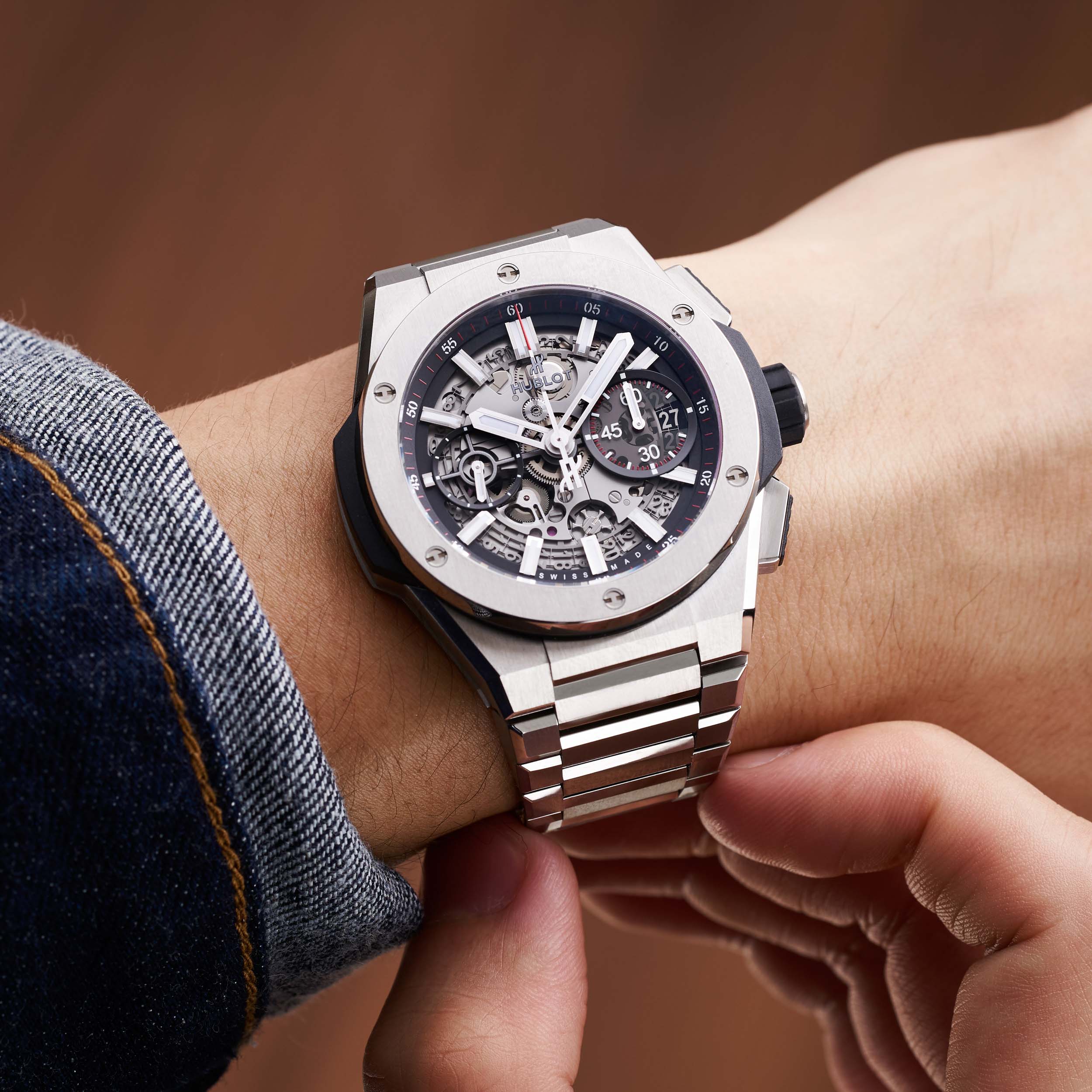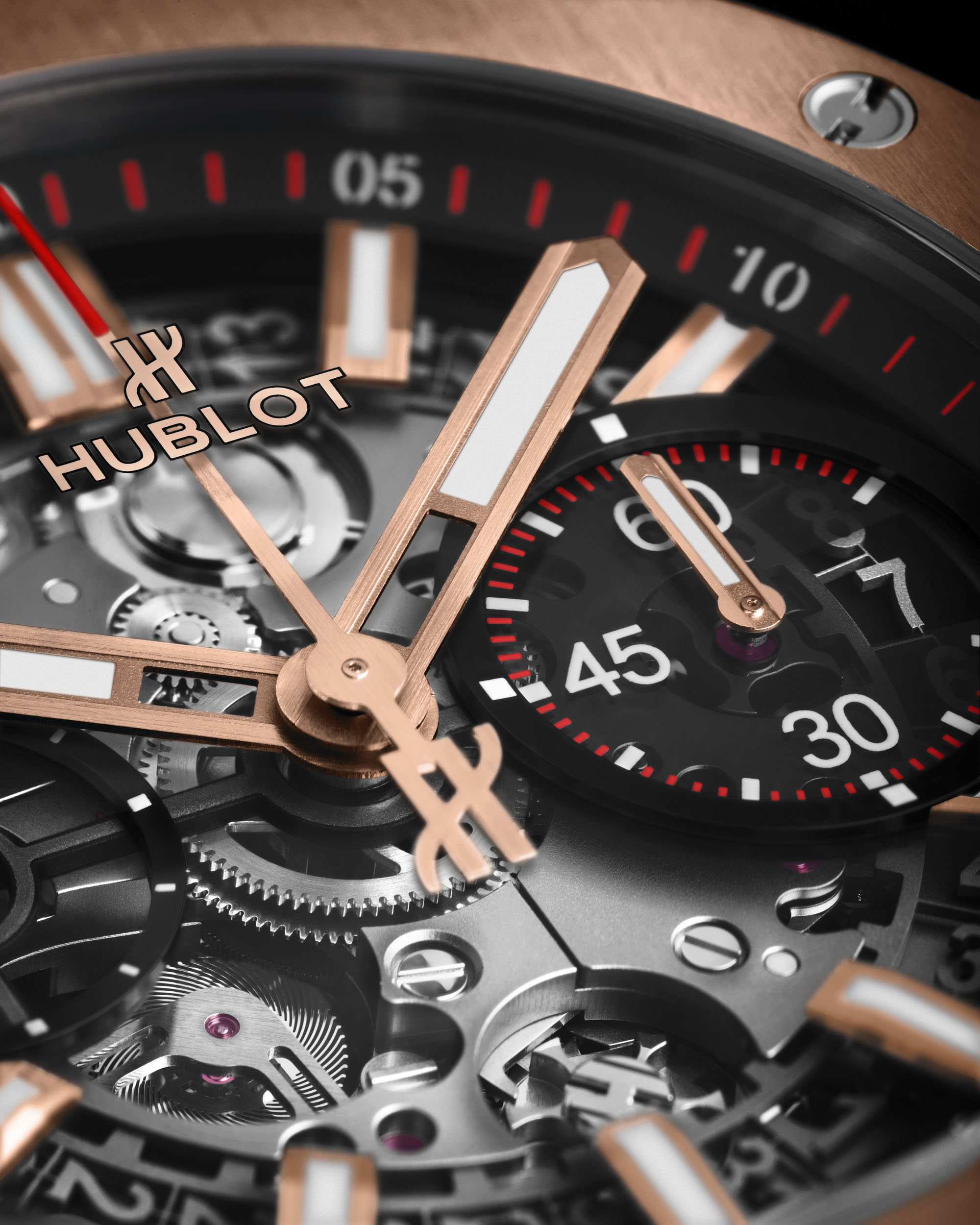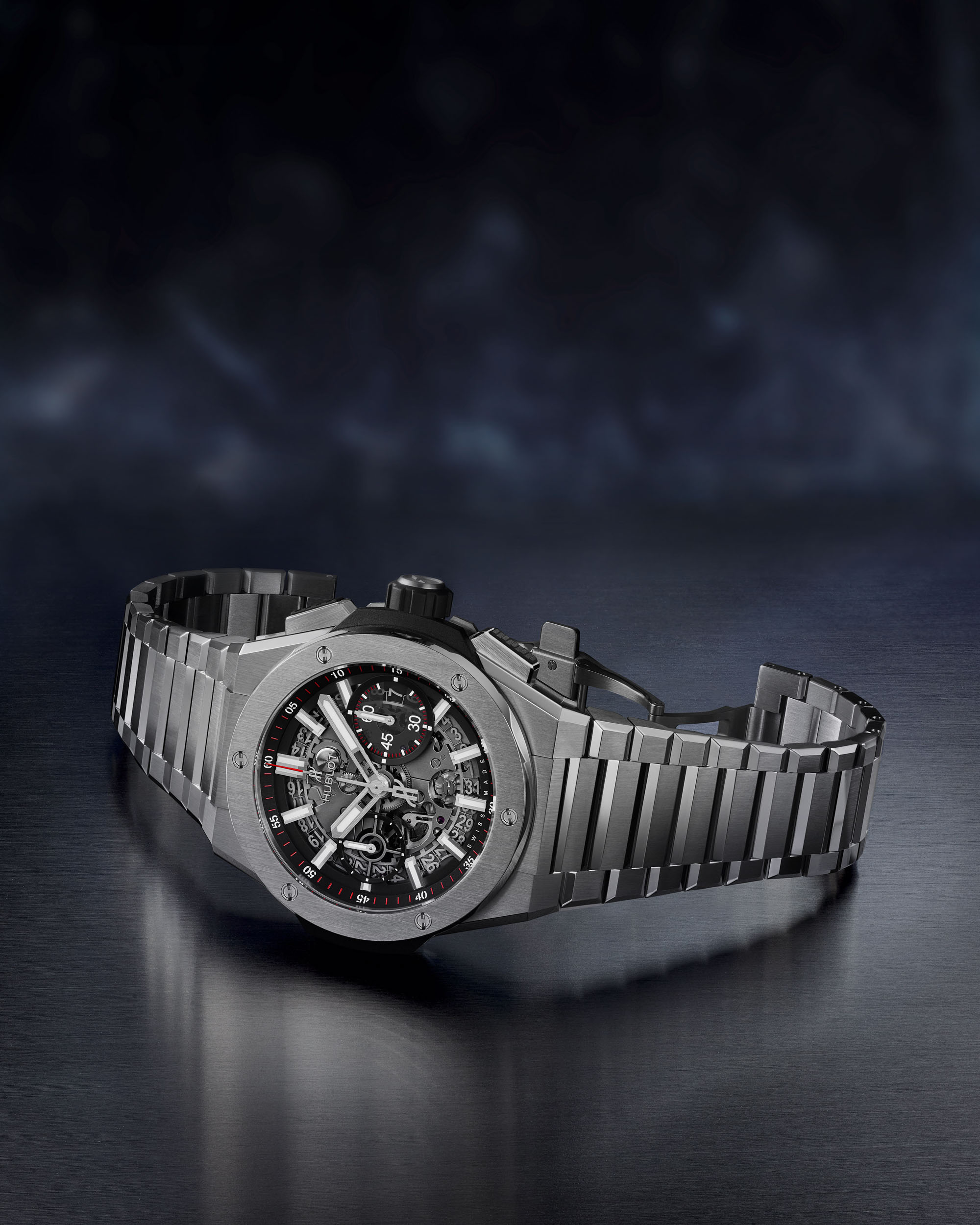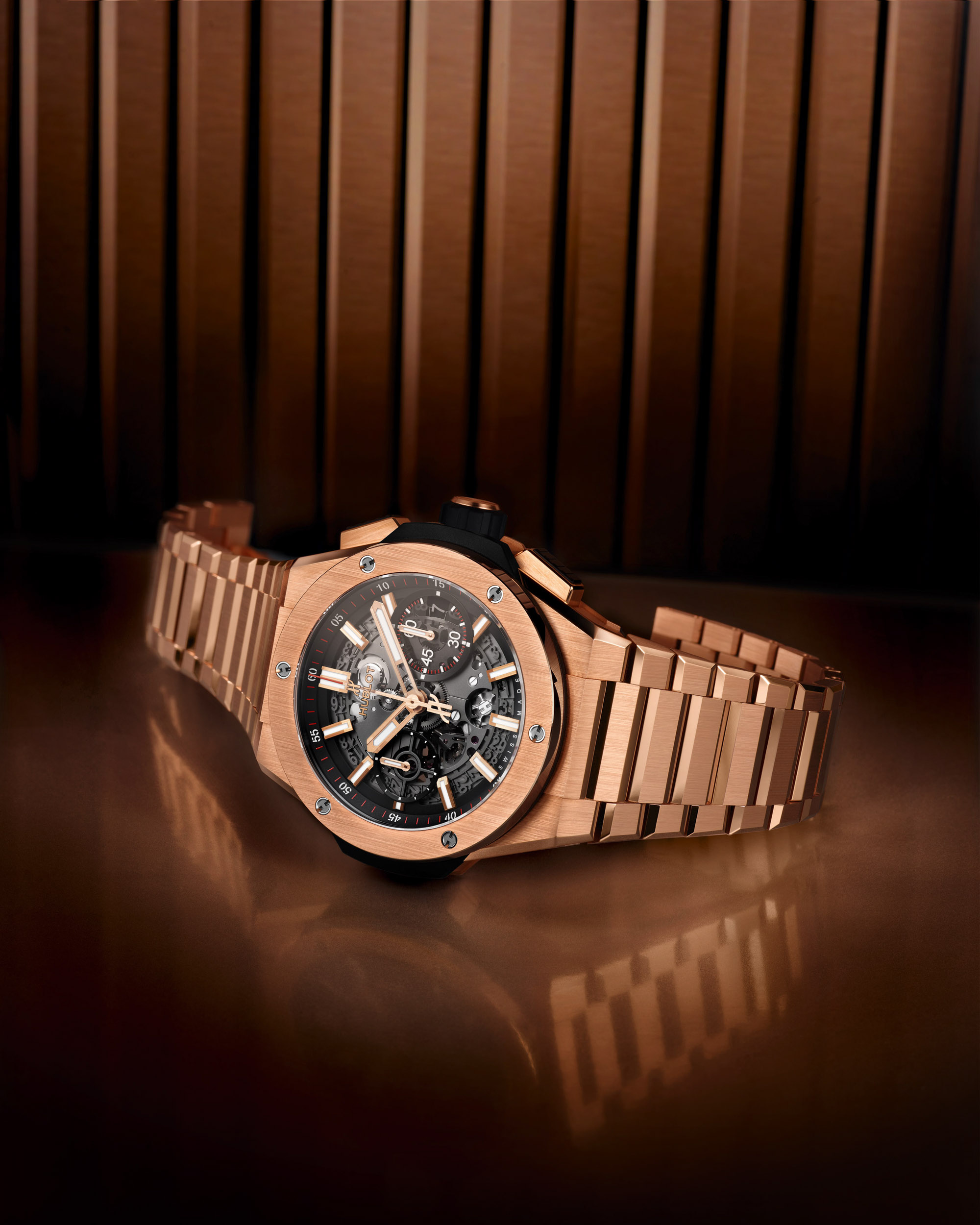New Watch! • 26 Jun 2020
Hublot Big Bang Integral
The Big Bang became a defining collection for Hublot when it first launched in 2005. Fifteen years later, the brand welcomes the latest addition to the line with the Big Bang Integral. As the name suggests, the model notably features an integrated bracelet design. Initially, this feels like an unusual or at least unexpected choice. Since its inception, the signature characteristics of the Big Bang have been its rubber strap and unique fusion of materials.

Yet, I would argue the Big Bang Integral marks another defining moment for Hublot. When Jean-Claude Biver helped Hublot develop the original Big Bang, the brand needed a design that was completely original, one with an undeniably commanding presence. Since then, Hublot has come a long way. Their legacy is firmly rooted in watchmaking history, and this has given them the freedom to create a less assertive, less avant-garde design that is still distinctly Hublot and distinctly Big Bang. Enter the Integral.

Path to the Integral
Unknowingly, Hublot’s founder Carlo Crocco laid the foundation for the Big Bang collection back in the 1970s. He had a vision for a watch with a porthole-shaped case and rubber strap. It took several decades and a little industry know-how from Biver to help Crocco transform his ideas into the Big Bang line. The initial model fully embodied the brand’s “art of fusion” concept, combining a stainless steel or red gold case with Kevlar inserts, ceramic bezel, carbon fibre dial, and, of course, rubber strap. Inside was an all-new chronograph movement that continued the concept with a black PVD treatment on the honeycomb surface of the tungsten carbide rotor.

With each new addition of the Big Bang, Hublot has remained true to Crocco’s vision while serving as an industry leader in experimentation with new materials and concepts. A year after the collection debuted, they became one of the first watchmakers to introduce and entirely black watch, the Big Bang All Black. In 2013, Hublot unveiled the UNICO chronograph movement, the only chronograph calibre with a column wheel and double clutch. Just two years later, the Big Bang celebrated its tenth anniversary with an array of milestone models including the brand’s first skeleton tourbillon, high jewellery versions, and the introduction of Magic Gold. This proprietary material is the world’s first and only 18k scratch-resistant gold alloy.

Hublot’s metallurgists created Magic Gold by injecting boron carbide in 24K gold alloyed with 3% molten liquid gold. In 2016, Hublot notched another industry first with the Big Bang UNICO Sapphire. As a contrast to the entirely black models, the Sapphire is entirely clear with a three-part case, bezel, and caseback made of sapphire crystal. Two years later, they launched the Big Bang UNICO Red Magic, the first watch to use red ceramic as a case material. Finally, in 2020 we see the introduction of the Big Bang Integral.

Integrated Bracelet Design
While the integrated bracelet is not part of the Big Bang’s roots, it is an important part of the lineage of luxury sport watches. Consider the original luxury sport watch: Gerald Genta’s Royal Oak for Audemars Piguet. It featured none other than an integrated bracelet. In more recent years, this category has exponentially grown in popularity with the rise of haute couture athleisure and increasingly casual workplace environments. This is the age of the luxury sport watch and subsequently the bracelet strap.

The integrated bracelet is not entirely new for Hublot. We have seen this styling in the Classic Fusion, and in 2015, we saw an integrated bracelet within the Big Bang line. The Big Bang UNICO bracelet came equipped with an interchangeable “One Click” bracelet attachment system featuring a combination of metal and ceramic links with rubber details on the back and edge of the bracelet. This is different from what we see on the Big Bang Integral. The Integral features a more traditional integrated bracelet, with a touch of the original Big Bang’s DNA along with higher quality finishing and finesse. With three links, one central and two lateral, Hublot employs a standard bracelet design as the foundation. Then, they add depth with angular edges that echo the model’s rectangular pushers. These distinctive pushers hark back to those of the original Big Bang, giving a subtle nod to the 2005 model. In addition, the bracelet combines polished and satin-finished surfaces. This along with the bevelling and chamfering of the links creates contrast between the case and the bezel lug. Coupled with a deployant buckle clasp, the result is a striking look that is equally comfortable on the wrist.

Case, Dial, and Movement
The all-new integrated bracelet necessitates a redesign of the case. It retains the iconic sandwich construction, this time without the composite resin insert. Instead, Hublot constructs each Integral entirely from one material, with the exception of the black composite resin lugs on the bezel and the overmoulded rubber crown casing. The Integral features a 42mm case construction with a thickness of 13.45mm and water resistance up to 100 metres. In addition, the dial and bezel are nearly identical to the existing Big Bang 42mm. However, instead of Arabic numerals, the Integral simply features bold, oversized stick indices. Inside the Integral, you will find the HUB1280 UNICO manufacture self-winding chronograph flyback movement with a 72-hour power reserve. It features a horizontal double clutch chronograph mechanism and column wheel visible through the skeletonised dial. The HUB1280 also boasts four unique patents for the oscillating seconds clutch, chronograph friction system with ball bearing adjustment, ratchet-retaining system with unidirectional gears, and index-assembly fine adjustment system.

Three Historic Materials
In addition to the bracelet design, the Integral pulls from Hublot’s DNA with three materials inextricably linked to the brand’s history. These include lightweight titanium, hardwearing all-black ceramic, and intensely red King Gold. Of the three, King Gold is exclusive to Hublot. Created at the brand’s foundry in Nyon, Switzerland, King Gold is a fiery metal that is even redder than the traditional 18K gold 5N. To achieve the one-of-a-kind hue, Hublot’s metallurgists increased the percentage of copper from the typical 20.5% while adding platinum to help neutralise oxidation and stabilise the colour over time.

Fifteen Years of the Big Bang
For past anniversaries, Hublot has focused on pushing the boundaries of watchmaking with bold technical achievements, ornate designs, and innovative materials. In 2020, the year of the Big Bang’s fifteenth anniversary, the brand seems to have taken a different yet equally captivating approach. They returned not only to their own roots but also to the roots of the luxury sport watch, adding a more classically styled model with an integrated bracelet that maintains the unique Big Bang DNA. While some may see this as just another luxury sport watch, to me, the Integral reiterates Hublot’s place of power in the watch industry. They no longer have to rely on the wow-factor and instead can rest in the timeless design that has made the luxury sport watch and the Big Bang such enduring styles.












